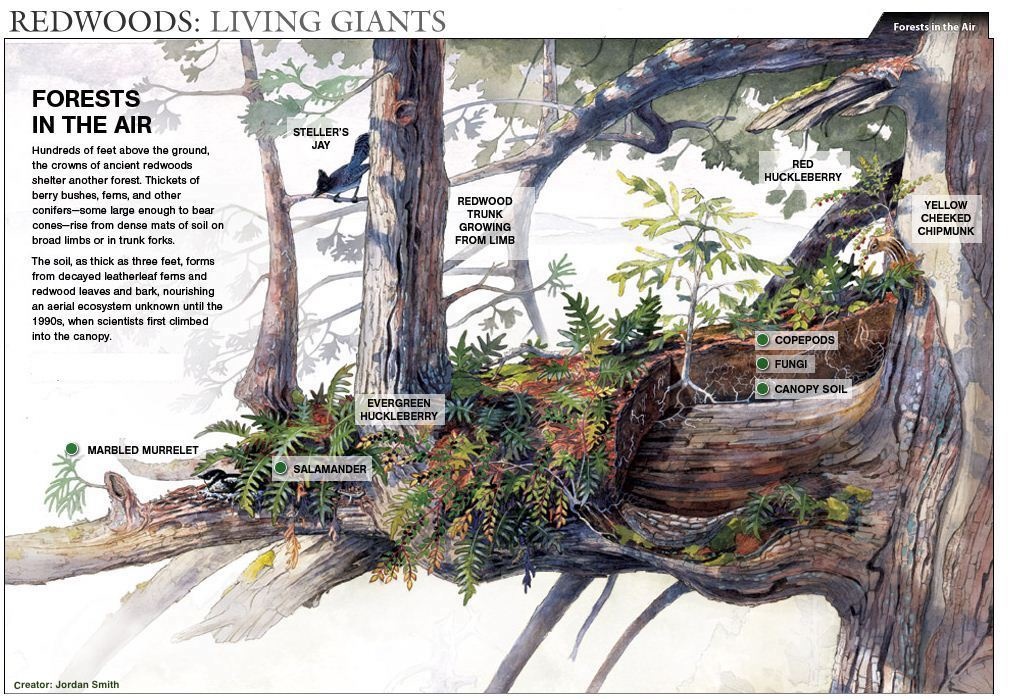The Redwood Canopies: A World Above the Forest Floor
- Posted on
- By GTree Staff
- Posted in animal species, biodiversity, conservation, ecosystems, environmentalism, microclimate, plant species, redwood canopies, wildlife
- 0

Redwood trees are famous for their towering height and distinctive reddish-brown bark. However, it's not just the trunk and branches of these magnificent trees that are noteworthy - their canopies are also teeming with life and play a critical role in the ecosystem.
The Redwood Canopies: A World Above the Forest Floor
Redwood trees are famous for their towering height and distinctive reddish-brown bark. However, it's not just the trunk and branches of these magnificent trees that are noteworthy - their canopies are also teeming with life and play a critical role in the ecosystem. In this blog post, we'll explore the unique world of redwood canopies and the incredible ecosystems they create.
A Haven for Wildlife
The canopies of redwood trees are home to a diverse array of plant and animal species, many of which are found nowhere else. The dense foliage provides a sheltered environment where animals can forage for food, build nests, and raise their young. A number of bird species, such as the spotted owl, the marbled murrelet, and the acorn woodpecker, rely on redwoods for their survival. In addition, many mammals, such as squirrels and raccoons, make their homes in the canopies of redwoods. The trees themselves also provide food for a number of bugs and insects, such as caterpillars, beetles, and spider mites.
A Distinct Microclimate
The dense canopies of redwoods create a unique microclimate that is different from the forest floor below. The shade provided by the canopies helps to regulate the temperature, and the moisture that is trapped in the foliage helps to create a moist and humid environment. This microclimate provides ideal conditions for a number of specialized species that are adapted to this type of habitat, including a number of ferns, mosses, and lichens.
A Network of Life
The canopies of redwoods are not just home to individual species, but are also part of a larger network of life that is interconnected and interdependent. The canopies provide a source of food and shelter for the animals that live there, and the animals, in turn, play a critical role in the ecosystem by pollinating flowers, dispersing seeds, and controlling populations of insects and other pests. The canopies are also linked to the forest floor, where fallen leaves and twigs provide nutrients to the soil and support the growth of other plants.
Conclusion
The canopies of redwoods are a remarkable and unique part of the ecosystem that support a diverse array of plant and animal species. The canopies provide shelter, food, and habitat for a wide range of species. They also play a critical role in regulating the local climate and supporting the network of life in the forest. The next time you visit a redwood forest, take a moment to look up and appreciate the world above the forest floor - it's a truly awe-inspiring sight!

Comments
Be the first to comment...